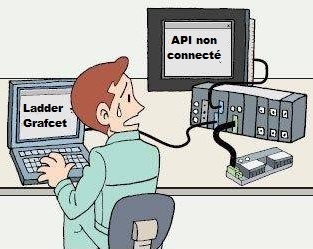Pont De Diodes - Maximus Expériences - Alternatif Vers Continue - Redresser - Courant - Graetz
http://www.facebook.com/maximus.experiences
Hey les amis, voila une petite vidéo "reprise" pour vous présenté la construction et le fonctionnement d'un pont de diodes.
Alors, pour le construire il vous faut tout simplement 4 diodes ainsi que 1 condensateur. Pour les diodes, n'importe lesquelles feront l'affaire si elles sont apeuprès des mêmes valeurs. Pour le condensateur, il vous faudra toujours impérativement une tention par exés a celle de départ (alternatif). Et une capacité la plus grande possible pour ensuite bien lisser le courant.
Au niveau du fonctionnement détaillé du pont de diode:
Dans la premiere case du tableau (de la vidéo), je présente le courant alternatif: la courbe. De 50Hz, 10V,....
Dans le seconde case, je montre le courant continue redressé qu'avec une seul diode (comme dans la vidéo "coilgun"). Le courant est continue mais que d'un seul sens, c'est a dire qu'on y pert 50% du rendement final.
Dans la 3° case, je présente encore le courant continue mais cette fois-ci redressé par 2 ou 4 diodes. Le courant est redressé deux fois plus que dans la case précédente (100Hz) mais la retourne au 0V, ce qui veut dire que le courant passe 100 fois par seconde du 10V au 0 (ce qui ne change presque rien dans le montage)
Mais si vous voulez un beau courant bien lice, bien propre, utilisez le schéma de la 3° case: le courant non seulement redressé mais aussi "lissé" ce qui veut dire que le condensateur prend en lui la charge et quand le courant redescent a 0V (100 fois pas secondes) il envoie a son tour du courant pour compenser puis quand le courant revient, il se recharge,..... Toujours la même chose quoi... C'est pour ça qu'il est très important de bien prendre une tention suppérieur a celle du courant alternatif ainsi qu'une bonne capacité :)
Au niveau des tests que j'ai effectué, lorsqu'on branche directement un Haut parleur sur un courant continue, il ne se passe strictement rien vu que le courant est continue mais comme le courant alternatif change 50fois par seconde de sens, la membrane de l'haut parleur vas d'avant en arriere 50 fois par seconde: il "oscille", il "vibre"...
Pour le moteur, c'est exactement le même principe (s'il n'est pas alternatif bien sur :) )
Remerciment a Victor S et a Baptiste pour leurs aide :)
Hey friends, here is a short video "cover" for you presented the construction and operation of a diode bridge.
So, to build it you need just 4 diodes and a capacitor. For diodes, anyone will do that if apeuprès the same values. For the capacitor, you will always necessarily an intention by exes that has a starting (AC). And a capacity as large as possible and then smooth the current well.
At the detailed operation of the diode bridge:
In the first cell of the table (the video), I present the AC: the curve. 50Hz, 10V, ....
In the second box, I show the rectified DC current with a single diode (as in the video "coilgun"). The current is continuous, but only one direction, that is to say that there pert 50% of final yield.
In the 3rd box, I still present the current continues but this time recovered by two or four diodes. The current is rectified twice in the previous box (100Hz) but returns to 0V, which means that the current is 100 times per second from 10V to 0 (which has almost no effect in the assembly)
But if you want a beautiful stream running good, clean by using the diagram of the 3rd box: the power not only recovered but also "smoothed" which means that it takes the capacitor and the load when the current has redescent 0V (100 times a second) in turn sends the current to compensate and then when the power returns, it is recharged, ..... Always the same thing ... what That's why it is very important to take attention supperior to that of AC and a good ability :)
At the tests I performed, when a speaker plugs directly to a DC current, it does absolutely nothing happens because the current is continuous but alternating current changes direction per second 50fois, the membrane the speaker going back and forth 50 times per second: it "oscillates" it "vibrates" ...
For the engine, this is exactly the same principle (if not alternative course :))
Victor S remerciment a Baptist and for their help :)"
Ajouter un commentaire


